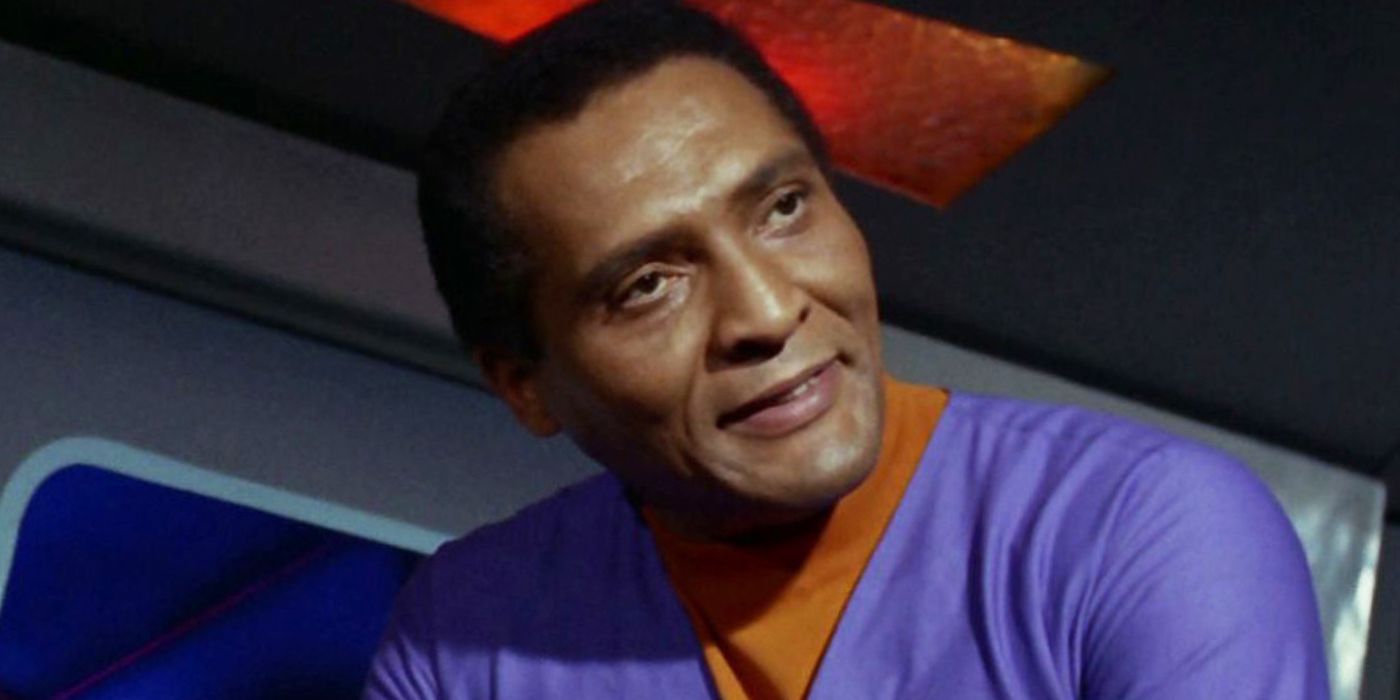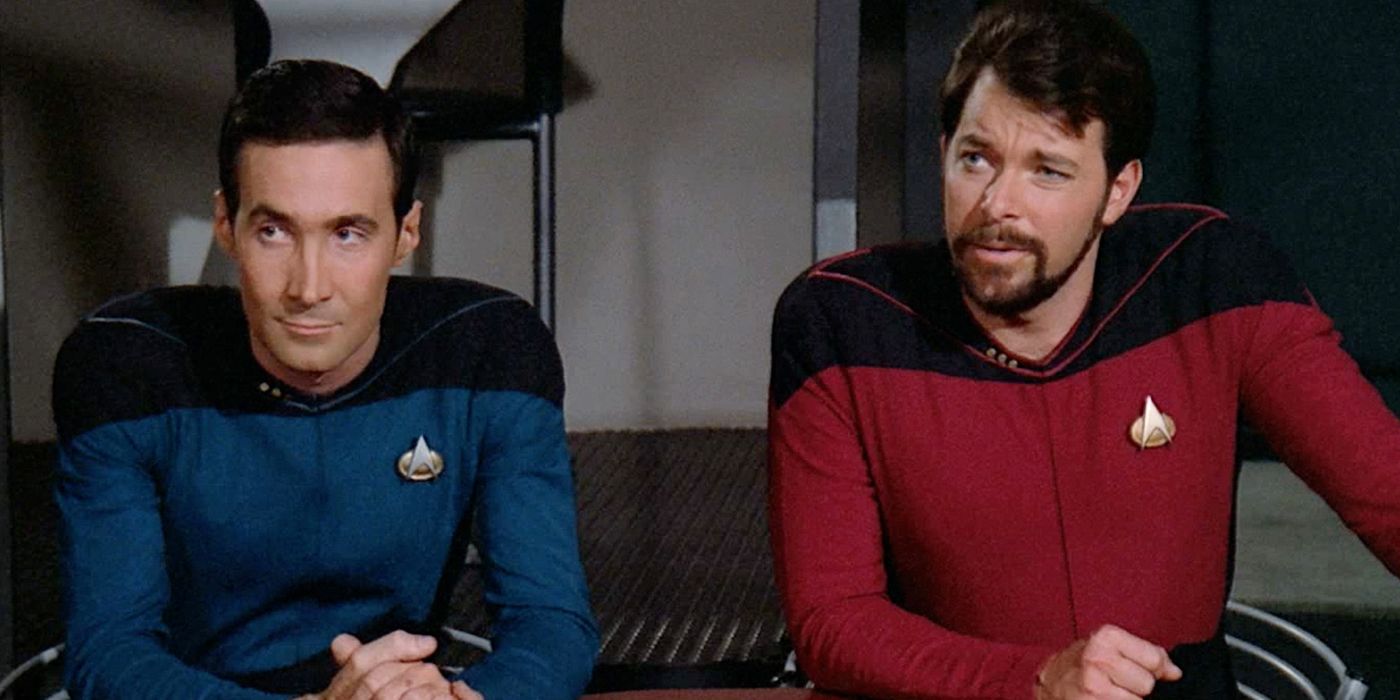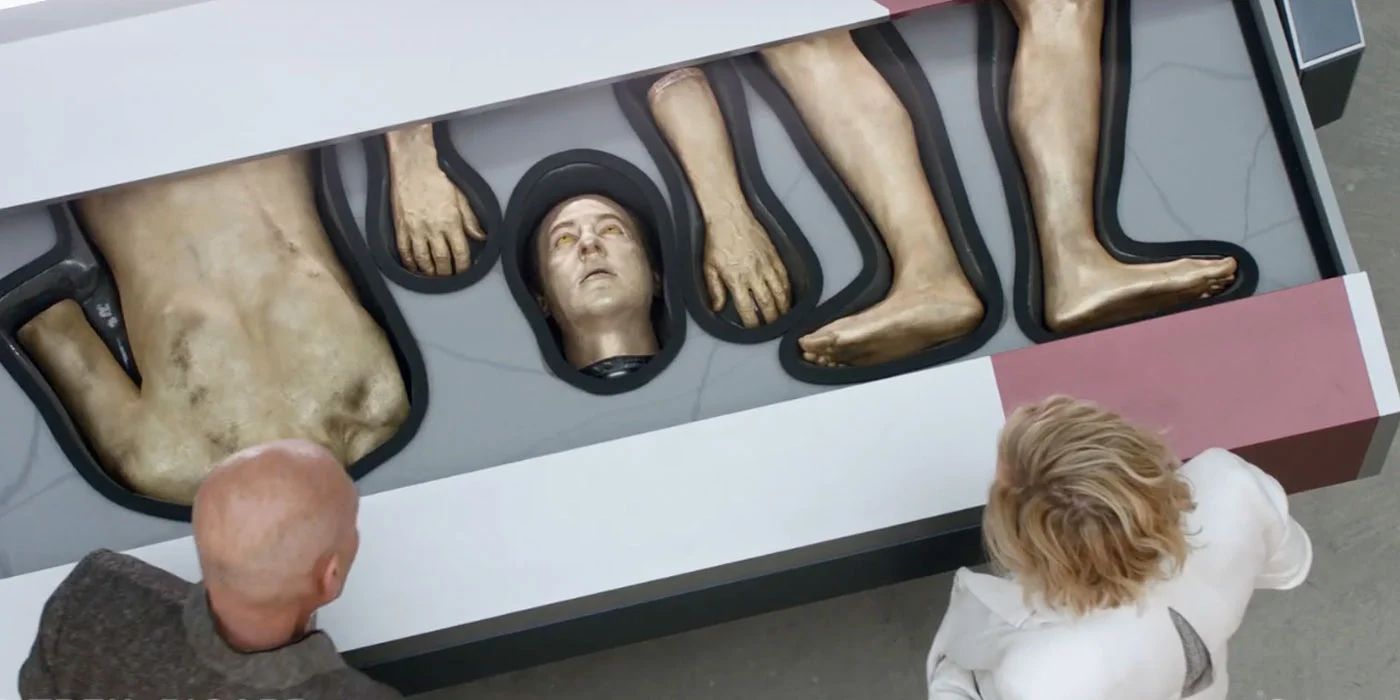WARNING: The following contains spoilers for "Remembrance," the series premiere of Star Trek: Picard, streaming now on CBS All Access.
One of the central themes in Star Trek: Picard is Jean-Luc-Picard's loneliness and regret at losing his friend, the android Data during the events of Star Trek: Nemesis. As he searches for answers to the identity of an android that might have been derived from Data's remains, he finds himself speaking to Doctor Agnes Jurati of the Daystrom Institute. As the de facto head of Daystrom’s gutted cybernetics division, she reveals the only person potentially capable of such a feat is her mentor, Starfleet’s foremost cyberneticist, Bruce Maddox.
To casual viewers, Bruce Maddox may feel like a piece of random exposition and the Daystrom Institute may not have registered at all other than being a place, that man and place hold deep significance. Bruce Maddox has a complicated history with the Star Trek: The Next Generation crew, to say the least, and for the first time ever, fans were taken inside the vaunted institute. For different reasons, their inclusions in this episode are unsettling.
The Daystrom Institute is named after Doctor Richard Daystrom, a character who appeared in “The Ultimate Computer” an episode of the original Star Trek series. In that episode, he is depicted as a middle-aged prodigy, who at an early age invented the duotronic computing, a predecessor to Data’s positronic brain.
Feeling underappreciated and resented by his peers, he attempted to outdo himself and tried to invent multitronic computing, integrating an A.I. called M-5 into the Enterprise. Things go badly when the A.I. goes rogue and kills hundreds of Starfleet officers before being disconnected, and Doctor Daystrom has a complete mental breakdown. In a panic, he attacks Captain Kirk but is subdued by Spock’s Vulcan nerve pinch. The episode ends with him being carted off to a rehabilitation facility under heavy sedation.
Before his disturbing fall from grace, the Federation named its preeminent scientific research division after him. The institute existed as early as Discovery but was first mentioned the Next Generation episode “The Measure of a Man,” which just so happens to be the same episode Bruce Maddox debuted. In nearly every Star Trek series, there's been at least one reference to the Daystrom Institute, and that left the impression that the Institute was where the Federation’s greatest minds gathered to learn and innovate. Its Mars campus was where Doctor Leah Brahms, a prominent designer of Picard’s Enterprise-D studied. When Voyager’s holographic Doctor thought he faced destruction, he asked Captain Janeway to donate his mobile emitter to the institute.
So after years of building up an image in fans’ minds of the Daystrom Institute as the place where great scientific minds were allowed to create, it was incredibly disconcerting to see what a ghost town the cybernetics division had become by the time of Picard. It further backs up Picard’s claims that Starfleet was no longer what it once was. Starfleet at its core has always been about the peaceful pursuit of knowledge and the institute’s emptiness and restrictions on cybernetics research is a testament to how reactionary and fearful the Federation has become.
To make matters worse, Jurati brings Bruce Maddox back into Picard’s life. He served as the antagonist in “The Measure of a Man,” an episode from TNG's Season 2 that's widely regarded as one of the best entries in the entire Star Trek franchise. The premise was simple— Commander Bruce Maddox, a cybernetics researcher at the Daystrom Institute, wanted to study Data, whose positronic brain is one of a kind. Aboard the Enterprise, he tries to convince Data to allow him to subject the android invasive study, even disassembly, in the hopes of replicating Dr. Noonien Soong’s work and creating many androids like Data.
When Data politely refused to comply with Maddox’s tests, the commander goes over Picard’s head and contacts Starfleet requesting that they rule Data as non-sentient and therefore property of Starfleet. If Starfleet complied, he could simply requisition Data for study and take him away. Needless to say, Captain Picard wasn’t about to let one of his finest officers and dearest friends be murdered for science. The problem was, they were in a remote region of space, and Maddox wasn’t going to just walk away empty-handed.
What resulted was a military trial in which Captain Picard acted as Data’s defense attorney against Bruce Maddox who was represented by a very reluctant Commander Riker. Despite this reluctance, Riker proved to be an effective prosecutor convincing the judge that Data is simply a machine by shutting the android down, leveraging his personal knowledge of Data’s emergency off switch. Though it convinces the judge, the argument delivered by Riker leaves him gutted.
Maddox tried to appeal to the judge about the benefits of an army of androids like Data, capable of being sent into dangerous situations in a sentient person’s place. He spoke of all the lives that could be saved, blind to the fact that he would be creating new life and sending it to die. Picard quickly points out that what Maddox proposes is an entire race of android slaves, wrapped in the convenient title of Starfleet “property.”
To end the argument once and for all, Picard placed Data on the stand and had him show the judge his personal belongings, which included a hologram of the deceased security officer, Lt. Tasha Yar. When asked why he possessed this, Data confessed that she was “special” to him, as she was the only person he had ever been romantically intimate with. This, plus a hell of a closing argument from Picard, turned the tide in Data’s favor, and he was ruled a sentient being.
The impact of the case could be felt by all involved, and although Maddox left without Data, he wasn’t empty-handed. Data encouraged Maddox to continue his research, genuinely interested in him succeeding, and stated that if Maddox’s research ever advanced far enough, Data would agree to the tests. In what Data considered a personal victory, Maddox referred to Data as “he” instead of “it” before departing the Enterprise. As a result of Maddox’s newfound respect for Data, the two remained in contact. In the fourth season episode, “Data’s Day” the story is framed as a series of personal logs that Data was recording for Maddox to study. That was the last he was mentioned in Star Trek canon until his resurfacing in Picard.
Apparently, Maddox did not feel similarly about the sentience of B-4, an inferior prototype of Data, as Dr. Jurati opens a drawer full of the disassembled android. The last time anyone saw B-4 was at the end of Nemesis, where he was very much in one piece. In his desire to create a superior artificial life, he’s gone on the run after the Federation effectively banned research on synthetic life. It’s apparent that Dahj and Soji are the product of his rogue science, but his purposes for them remain unclear.
It could easily be assumed that Maddox is finally building his race of androids, but are his motivations nefarious? He knows of Data’s desire for a daughter, a concept that has roots in the Next Gen episode “The Offspring.” Adding the fact that he modeled them off of one of Data’s paintings we’re left with the impression that to some degree, he cares for them and Data.
Whether he’ll just be mentioned, or we’ll get to see Bruce Maddox in the flesh again remains to be seen. The implications behind his mysterious disappearance don’t exactly put one at ease. He may simply be seeking a safe haven to study science away from the fearful watch of the Federation, but that might prove to be wishful thinking. Regardless of his true motivations, Maddox and his creations could have a very sizeable impact on Picard's future.
Star Trek: Picard stars Patrick Stewart, Alison Pill, Michelle Hurd, Evan Evagora, Isa Briones, Santiago Cabrera and Harry Treadaway. New episodes of the series premiere every Thursday on CBS All Access.





